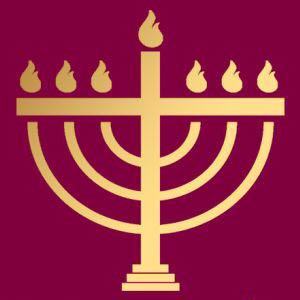親愛的家人、朋友、同工和全球學院的師生們,
復活節是基督教的最重要的節日之一。基督徒慶賀著耶穌基督的復活,這是人類從罪惡和死亡中得到救贖的重要時刻。在這個特別的日子,我們要一起來思考人生的苦罪和面對的後果,並且藉著耶穌基督的救贖得到新生命。
詩人T.S. Eliot寫了一首詩歌《東科克》讓我們更深入的感受人生的生與死。我們都要經歷起點和終點,以及中間的各種變化和挑戰。人生的路上,我們總會遇到各種痛苦和苦難。但是C.S. Lewis在喪妻以後,也寫了一本書《痛苦的難題》告訴我們,苦難也可以讓我們成長、學習,甚至歸向神。在人生的痛苦和快樂之間,願我們得到屬靈的智慧和生之勇氣,感謝上帝所賜予的一切,並且以愛和憐憫與人同行。
復活節更是一個非常重要的機遇,因為耶穌基督的復活讓我們得以從罪惡和死亡中得到救贖。在這一天,我們一起慶祝耶穌基督的復活,也反思自己的信仰和靈性生命。傳道書中說:”凡事都有定期,天下萬務都有定時。 生有時,死有時。栽種有時,拔出所栽種的也有時。 殺戮有時,醫治有時。拆毀有時,建造有時。」 (傳道書3:1-3) 復活節就是一個提醒永恆已經臨在於當下的日子,我們的一切在其中都有定時定位。
在此,我們要感謝基督燈臺協會和全球學院所有的支持者。感謝您們一直以來的支持和關註,讓全球學院能夠繼續為世界各地的學生提供高質量的公開神學教育課程,也讓南溫莎基督燈臺宣教村的建造穩步前行,謝謝大家支持點火點燈,薪火相傳的異象和使命,讓我們有燈油可以燃點。我們希望您們在在基督裡有平安、喜樂和愛。
復活節快樂,今天我們一起慶賀在教會年曆中最重要的日子,在慶典中,我們彼此勉勵回應上帝的選召,並且踐行這復活的信仰。
陳曉東牧師
基督燈台協會&全球學院
《東科克》是T.S. 艾略特最著名的詩歌之一,是他的《四個四重奏》中的一段。這首詩描述了人生的起點和終點之間的歷程,通過對建築、自然和時間的描繪,展示了生命的不同階段。正如傳道書中所說,一切皆有定期,天下萬務都有定時,時間與機會也是有限的。詩歌開頭就說」在我的開端裏是我的終結」,強調了日月的輪轉,生命的起點和終點都是不可逆轉的。接下來的詩歌描述了房屋的興衰,指出了一切都在流轉;人們建造房屋,住進去,然後再離開,房屋也是一樣。它們可能倒塌,被拆除,也可以被擴建和重建。在這個過程中,舊的建築材料用於新的建築,舊的火堆變成灰燼,回歸大地,說明一切都是變動不居的。
詩歌中還有一段描寫自然的瑟縮,風吹破窗戶玻璃,墻板因野鼠行走搖晃。這些景象使讀者產生了自然與人生情境之間的聯想。自然是永久的,而人生則是有限的。時間一去不復返,生命也是如此。詩歌的最後一句話,艾略特再次強調 「在我的开端里是我的终结」,將生命的交替循環表達得繞樑三日。
艾略特的詩歌《東科克》重現了聖經傳道書的主題。我們的生命始於一個起點,終於一個終點,中間經歷了許多痛苦、挑戰和變化。C.S. Lewis在他經歷喪妻之痛後給出了一些他的思考。他在《痛苦的難題》中指出,痛苦是人生不可避免的,生命的旅程就是不斷變化和成長,這種變化和成長也伴隨著痛苦和磨難。然而,這種痛苦也可以帶來成長和學習的機會。他說痛苦是通向神的一條路。在人類許多的歷史時期,人們都在痛苦和苦難中尋求神的幫助和保護,痛苦使我們謙卑,更加依賴神。
此刻在復活節前夕 (the Holy Satursday), 我們一同默想痛苦,哀慟的人有福了,讓我們成為一群在人生際遇中有高度有溫度的人,在經歷自己的痛苦和苦難時,更加能夠理解別人的痛苦,並向別人伸出援手。我們的同情心和愛心在痛苦時刻能夠成為人的祝福,也使我們自己也得著安慰。哀慟的人有福了,因為他們必得安慰。(太5:4)
In my beginning is my end.
在我的開端里是我的終結
In succession houses rise and fall, crumble, are extended,
房屋接連而起,倒塌,崩塌,被擴建,
Are removed, destroyed, restored, or in their place
被拆除,被毀壞,被重建,或在它們的位置上
Is an open field, or a factory, or a by-pass.
是一處開闊的田野,或者是一座工廠,或者是一條繞路。
Old stone to new building, old timber to new fires
舊石頭變成新建築,舊木材變成新的火堆,
Old fires to ashes, and ashes to the earth
舊的火堆變成灰燼,灰燼回歸大地
Which is already flesh, fur and faeces,
這裡已經是血肉、皮毛和糞便,
Bone of man and beast, cornstalk and leaf.
是人和獸的骨頭、玉米秸稈和葉子。
Houses live and die: there is a time for building
房屋有生命也有死亡:建造的時間到了
And a time for living and for generation
也有居住和生養的時間
And a time for the wind to break the loosened pane
也有風吹破鬆動的窗玻璃
And to shake the wainscot where the field-mouse trots
和搖晃那些野鼠行走的牆板的時間
And to shake the tattered arras woven with a silent motto.
還有搖晃那編織著無聲座右銘的破舊的掛毯的時間。
In my beginning is my end.
在我的開端里是我的終結。
Easter is one of the most important Christian holidays. Christians celebrate the resurrection of Jesus Christ, which is a significant moment of redemption from sin and death for all humanity. On this special day, let us reflect on the sufferings of life and the consequences we face, and through the salvation of Jesus Christ, receive new life.
Poet T.S. Eliot wrote a poem, “East Coker,” which allows us to deeply feel the life and death of human existence. We all experience beginnings and endings, as well as various changes and challenges in between. Along life’s journey, we always encounter various pains and hardships. However, C.S. Lewis, after losing his wife, also wrote a book called “The Problem of Pain,” which tells us that suffering can also make us grow, learn, and even turn to God. Between the pains and joys of life, may we obtain spiritual wisdom and the courage to live, give thanks for all that God has given us, and walk with others in love and compassion.
Easter is an even more important moment because the resurrection of Jesus Christ allows us to be redeemed from sin and death. On this day, we celebrate the resurrection of Jesus Christ together and reflect on our own faith and spiritual lives. Ecclesiastes tells us, “There is a time for everything, and a season for every activity under the heavens: a time to be born and a time to die, a time to plant and a time to uproot, a time to kill and a time to heal, a time to tear down and a time to build” (Ecclesiastes 3:1-3). Easter is a reminder that eternity is present in the here and now, and that everything has its appointed time and place.
We want to thank you for your ongoing support and attention, allowing the Global Christian Institute to continue to provide high-quality open theological education to students around the world, allowing the construction of the Golden Lampstand Mission community of South Windsor to move forward step by step, and allowing the vision of passing on the torch to next generation have oil to burn. We hope that you have peace, joy, and love in Christ.
Happy Easter! Today we celebrate the most important day of the year together. At this important moment, let us encourage each other in our commitment to God and practice this faith of resurrection.
“East Coker” is one of T.S. Eliot’s most famous poems, from his “Four Quartets” collection. The poem describes the journey between the beginning and end of life, portraying the different stages of life through depictions of architecture, nature, and time. As Ecclesiastes says, “To everything there is a season, and a time to every purpose under the heaven.” The poem begins with the line “In my beginning is my end,” emphasizing the cyclical nature of time, where the beginning and end of life are irreversible.
The poem goes on to describe the rise and fall of houses, highlighting the transience of everything. People build houses, live in them, and then leave them behind. The houses may crumble, be demolished, or be expanded and rebuilt. In this process, old building materials are reused for new constructions, and old fireplaces become ashes, returning to the earth, demonstrating the perpetual movement of everything.
The poem also includes a passage describing the shrinkage of nature, with the wind blowing through broken windows and walls shaking from the scurrying of mice. These scenes evoke connections between nature and the human condition. Nature is eternal, while life is limited. Time passes by irreversibly, as does life. The last line of the poem reiterates, “In my beginning is my end,” expressing the cyclical nature of life.
T.S. Eliot’s “East Coker” echoes the theme of Ecclesiastes in the Bible. Our lives begin at a starting point and end at a finishing point, with many pains, challenges, and changes in between. C.S. Lewis offered some of his thoughts after experiencing the pain of losing his wife. In “The Problem of Pain,” he points out that pain is inevitable in life, and the journey of life is one of constant change and growth, which is also accompanied by pain and hardship. However, this pain can also bring opportunities for growth and learning. He says that pain is a road to God. In many historical periods, people have sought God’s help and protection in pain and suffering. Pain makes us humble and more dependent on God.
On the eve of Easter, let us all meditate on pain and mourning. Blessed are those who mourn, as we become a group of people who are highly compassionate and warm-hearted. Through our own pain and suffering, we can better understand the pain of others and extend a helping hand. Our sympathy and love can be a blessing to others in times of pain and also bring comfort to ourselves. Blessed are those who mourn, for they will be comforted. (Matthew 5:4)
